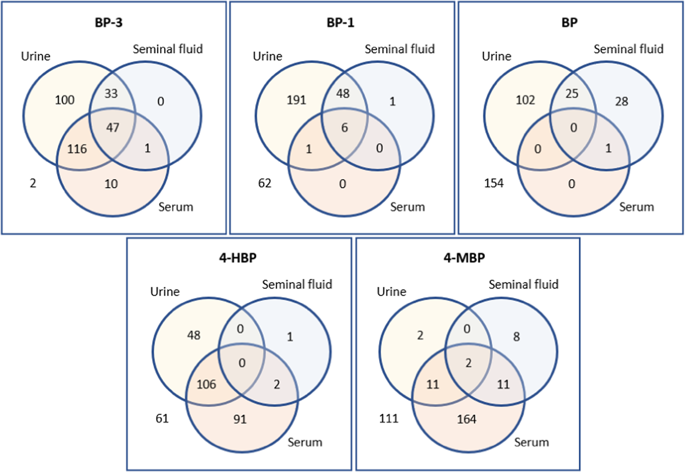当前位置:
X-MOL 学术
›
J. Expo. Sci. Environ. Epid.
›
论文详情
Our official English website, www.x-mol.net, welcomes your
feedback! (Note: you will need to create a separate account there.)
UV filters in matched seminal fluid-, urine-, and serum samples from young men.
Journal of Exposure Science and Environmental Epidemiology ( IF 4.1 ) Pub Date : 2020-02-12 , DOI: 10.1038/s41370-020-0209-3 Hanne Frederiksen 1 , Marianna Krause 1 , Niels Jørgensen 1 , Anders Rehfeld 1 , Niels E Skakkebæk 1 , Anna-Maria Andersson 1
Journal of Exposure Science and Environmental Epidemiology ( IF 4.1 ) Pub Date : 2020-02-12 , DOI: 10.1038/s41370-020-0209-3 Hanne Frederiksen 1 , Marianna Krause 1 , Niels Jørgensen 1 , Anders Rehfeld 1 , Niels E Skakkebæk 1 , Anna-Maria Andersson 1
Affiliation

|
Recent in vitro studies have shown that some chemical UV filters mimic the effect of progesterone in the activation of the CatSper Ca2+ channel in human spermatozoa. However, so far, the extent of exposure of human spermatozoa to chemical UV filters via the presence of these chemicals in seminal fluid has been unknown. Here, we present levels of UV filters measured in human seminal fluid and comparisons to levels measured in concurrently collected urine and serum samples. In total nine UV filters were analysed by TurboFlow-LC-MS/MS in paired urine, serum, and seminal fluid samples from 300 young Danish men from the general population; each man collected one of each sample type within 1 h. The samples were collected during February-December 2013 and only six of the men reported having used sunscreen during the 48 h preceding the sample collection. Four of the examined UV filters could be detected in seminal fluid samples at levels above LOD in more than 10% of the samples. Benzophenone (BP), benzophenone-1 (BP-1), and benzophenone-3 (BP-3) were most frequently detected in, respectively, 18%, 19%, and 27% of the seminal fluid samples albeit at levels one to two orders of magnitude lower than the levels observed in urine. 4-methyl-benzophenone (4-MBP) was detectable in 11% of the seminal fluid samples while in <5% of the urine samples. Overall 45% of the men had at least one of the UV filters present in their seminal fluid at detectable levels. For BP-1 and BP-3 individual levels in urine and seminal fluid were significantly correlated, while this was not evident for BP nor 4-MBP. In conclusion, chemical UV filters are present in men's seminal fluid; some of which can activate the human sperm-specific CatSper Ca2+ channel and thereby potentially interfere with the fertilisation process.
中文翻译:

来自年轻男性的匹配精液、尿液和血清样本中的紫外线过滤器。
最近的体外研究表明,一些化学紫外线过滤剂模拟了黄体酮在激活人类精子中 CatSper Ca2+ 通道的作用。然而,到目前为止,人类精子通过精液中这些化学物质的存在而暴露于化学紫外线过滤剂的程度尚不清楚。在这里,我们展示了在人类精液中测量的紫外线过滤剂水平,并与同时收集的尿液和血清样本中测量的水平进行了比较。使用 TurboFlow-LC-MS/MS 分析了来自普通人群的 300 名丹麦年轻男性的配对尿液、血清和精液样本中的总共 9 个紫外线过滤剂;每个人在 1 小时内收集了每种样本类型之一。样本是在 2013 年 2 月至 12 月期间收集的,只有 6 名男性报告在样本收集前的 48 小时内使用了防晒霜。在超过 10% 的样本中,可以在精液样本中检测到超过 LOD 水平的四种紫外线过滤剂。二苯甲酮 (BP)、二苯甲酮-1 (BP-1) 和二苯甲酮-3 (BP-3) 分别在 18%、19% 和 27% 的精液样本中检测到,尽管水平为 1 到比尿液中观察到的水平低两个数量级。4-甲基二苯甲酮 (4-MBP) 在 11% 的精液样本中可检测到,而在 <5% 的尿液样本中检测到。总体而言,45% 的男性精液中至少含有一种可检测到的紫外线过滤剂。对于 BP-1 和 BP-3,尿液和精液中的个体水平显着相关,而这对于 BP 和 4-MBP 并不明显。总之,化学紫外线过滤剂存在于男性精液中;
更新日期:2020-02-12
中文翻译:

来自年轻男性的匹配精液、尿液和血清样本中的紫外线过滤器。
最近的体外研究表明,一些化学紫外线过滤剂模拟了黄体酮在激活人类精子中 CatSper Ca2+ 通道的作用。然而,到目前为止,人类精子通过精液中这些化学物质的存在而暴露于化学紫外线过滤剂的程度尚不清楚。在这里,我们展示了在人类精液中测量的紫外线过滤剂水平,并与同时收集的尿液和血清样本中测量的水平进行了比较。使用 TurboFlow-LC-MS/MS 分析了来自普通人群的 300 名丹麦年轻男性的配对尿液、血清和精液样本中的总共 9 个紫外线过滤剂;每个人在 1 小时内收集了每种样本类型之一。样本是在 2013 年 2 月至 12 月期间收集的,只有 6 名男性报告在样本收集前的 48 小时内使用了防晒霜。在超过 10% 的样本中,可以在精液样本中检测到超过 LOD 水平的四种紫外线过滤剂。二苯甲酮 (BP)、二苯甲酮-1 (BP-1) 和二苯甲酮-3 (BP-3) 分别在 18%、19% 和 27% 的精液样本中检测到,尽管水平为 1 到比尿液中观察到的水平低两个数量级。4-甲基二苯甲酮 (4-MBP) 在 11% 的精液样本中可检测到,而在 <5% 的尿液样本中检测到。总体而言,45% 的男性精液中至少含有一种可检测到的紫外线过滤剂。对于 BP-1 和 BP-3,尿液和精液中的个体水平显着相关,而这对于 BP 和 4-MBP 并不明显。总之,化学紫外线过滤剂存在于男性精液中;











































 京公网安备 11010802027423号
京公网安备 11010802027423号